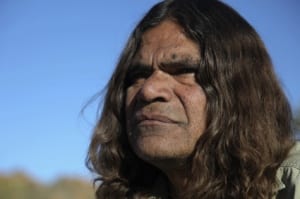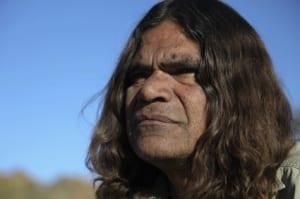
In 1974, scientists digging in the dry lake bed of Lake Mungo in southeastern Australia uncovered the skeleton of a man preserved in the deep layers of sand and clay. Dating techniques eventually revealed that this individual died about 40,000 years ago.
Scientists and the popular press dubbed the individual “Mungo Man.” Why did he make such a splash? Not only because he was – and remains – one of the oldest and most complete skeletons of the earliest Australians, but because his appearance shattered the previously held notion that humans had first set foot in Australia less than 10,000 years ago. It was so far from where humans arose in Africa, and so remote. So of course humans arrived there so much later than everywhere else, many experts reasoned. With the discovery of Mungo Man, this idea lost support, and scientists now concede that Australia was settled much earlier than many other parts of the world, including the Americas and parts of Europe.
While this discovery initially answered many questions regarding the peopling of Australia, it left many more unanswered – especially how people could have reached an island continent so soon after humans first expanded beyond Africa about 60,000 years ago.
The thinking is that after leaving Africa, one or more groups of humans journeyed from their homeland in East Africa into Arabia via the Red Sea. Over the next several thousand years, their descendants continued along the coasts of Arabia and India, eventually heading south into present-day Indonesia and finally to Australia, which was joined with the island of New Guinea at the time.
There has been some archaeological and genetic evidence of such a migration, but most of it has been indirect or circumstantial. Some scientists remain unconvinced because researchers have not been able to show a direct link between modern Australian Aboriginals and modern people living along the coastal route from Africa. But now, in a new study led by the Anthropological Survey of India, geneticists believe they’ve found the first concrete evidence of such a link. Their results are reported in the July 21 issue of BMC Evolutionary Biology.
The team, led by Satish Kumar, reasoned that if the hypothesis of an ancient migration along the Indian Ocean coast toward Australia was accurate, there would be evidence in the DNA of modern people living along that path. So they compared the DNA of modern Australian Aboriginals to that of tribes from India, such as the Baiga of central India and the Birhor of eastern India. These groups are often called “relic populations” because they are believed to share many cultural, linguistic, physical and genetic features with the region’s ancient inhabitants.
Experts have long noticed that the Baiga, Birhor and other relic populations share physical similarities with native Australians. Kumar and his team reasoned that there could be DNA similarities too.
Kumar led the extraction and analysis of mitochondrial DNA (mtDNA) from nearly 1,000 individuals from Indian relic populations. For comparison, they used Australian Aboriginal DNA data that had already been analyzed and published by colleagues. After comparing the two groups, they came to a startling conclusion: two specific genetic mutations on the mtDNA of the Indian and aboriginal samples matched perfectly. Not only that, but these particular mutations do not exist elsewhere in the world; they are shared exclusively between a few isolated tribes in India and native Australians.
Kumar and his colleagues concluded the two groups must share a common ancestry. To lend further credence to their theory, they calculated the date when the ancestors of the Indian tribes and Australian Aboriginals must have split.
Their calculations produced a date of 55,000 years ago, a time when early humans in India were probably hunting wildlife and gathering plant foods. Some of their descendants eventually formed tribes like the Baiga and Birhor; others moved eastward, traversing southeastern Asian and then using maritime technology to cross nearly 60 miles of open ocean between Indonesia and New Guinea.
After arriving in Australia, they moved into the heart of the Australian Outback. A few thousand years later, a direct descendant of these ancient explorers was laid to rest along the shores of Lake Mungo.




